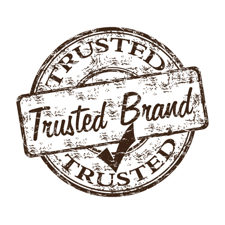Branding: It's Not Just About Being Top of Mind Anymore
 Successful branding in the 21st century is about developing consistency in how your customers interact with your company. From how employees answer the phone to how quickly you reply to a social media complaint, your company has to rely on streamlined and effective channels of internal communication in order to stay on top of how your brand is perceived in the marketplace.
Successful branding in the 21st century is about developing consistency in how your customers interact with your company. From how employees answer the phone to how quickly you reply to a social media complaint, your company has to rely on streamlined and effective channels of internal communication in order to stay on top of how your brand is perceived in the marketplace.
No matter how successful your brand, when these channels break down, you learn the hard way why they are so important. McDonald’s recently ran a Twitter hashtag promotion using #UnwrapWhatsFresh. Twitter was instantly flooded with offensive, often suggestive tweets from consumers about what they’d like to “unwrap”—not exactly the messages McDonald’s had in mind for their brand image.
McDonald's disastrous hashtag shows just how important it is to take control of your organization's image and presentation to customers. Due diligence during the creation of any new content is important, but showing your customers you value their time and feedback is just as critical. Developing your brand is about looking for ways to manage and improve your customers' experience at all points of contact, whether they're a first-time visitor to your web site or a loyal customer looking for product support. Making customer satisfaction your primary goal is the best way to reinforce brand loyalty.
Benefits of Integrating CRM Systems
But developing a stable of loyal, satisfied customers doesn't happen on its own. A robust customer relationship management (CRM) system has become a necessity for growing an established company around the world. The business intelligence a CRM system provides significantly increases your capacity to foster brand loyalty by allowing you to develop targeted marketing and feedback. And with centralized data, customer support has the knowledge and authority necessary to address customer concerns on the fly while staying on-brand and making every interaction a positive one.
The Economist’s Tim Hindle argues that a company using a CRM system is able to give the customer what he/she really wants rather than what the company thinks the customer wants. Hindle also underscores the relative value of retention over acquisition, suggesting companies looking to lower client acquisition costs should first focus on retaining the customers they already have.
A CRM system such as Insightly allows your company to collect, store and share every customer interaction or promise you make right through your inbox. Applying this information to your customer service systems gives you multiple touch points across the sales and customer lifecycle, helps you understand your customers' individual needs more clearly, and—most importantly—apply your new knowledge to give your customers the best service experience possible. A customer who has positive interaction at point-of-sale and with your customer service department is far more likely to be loyal to your brand.
Improving your processes and implementing an effective CRM solution will help your company meet evolving customer needs and avoid the potentially costly consequences of miscommunication and unmet expectations. Meredith Estep from Examiner.com writes: “Your customers should know what to expect from your company right from the beginning.” The more prepared your organization is to handle point-of-sale interaction (and subsequent interactions via customer service), the better your customers’ experience will be. The better the experience, the more likely those customers will return in the future and regard your brand as the one they trust.
Megan Totka is the Chief Editor for ChamberofCommerce.com. She specializes on the topic of small business tips and resources. ChamberofCommerce.com helps small businesses grow their business on the web and facilitates connectivity between local businesses and more than 7,000 Chambers of Commerce worldwide.

